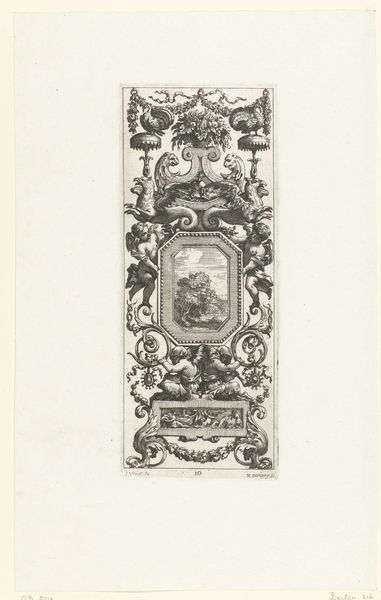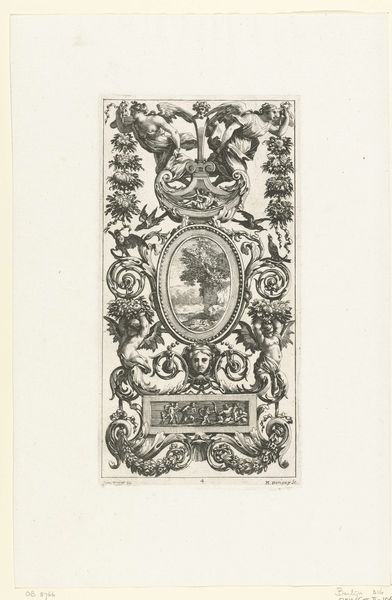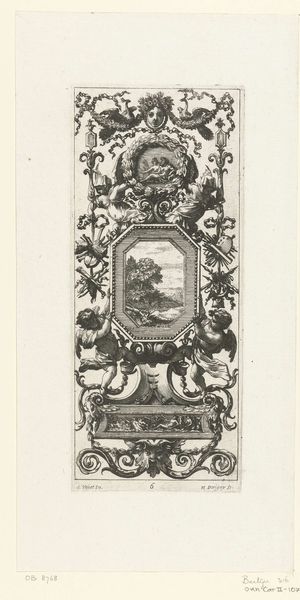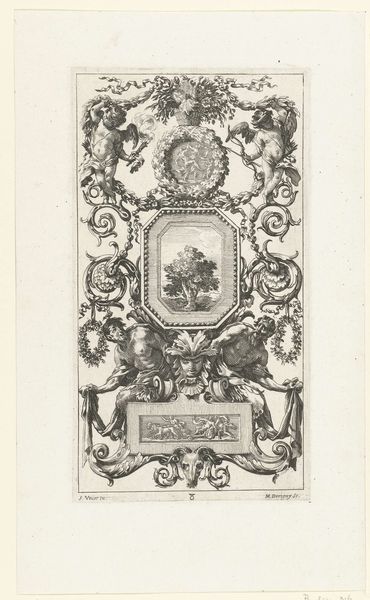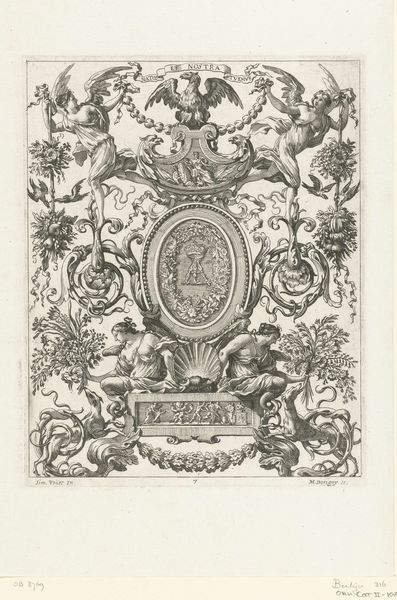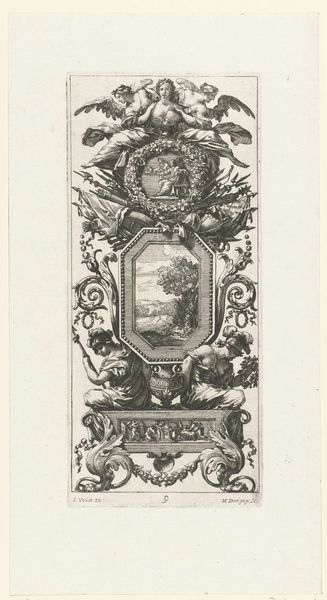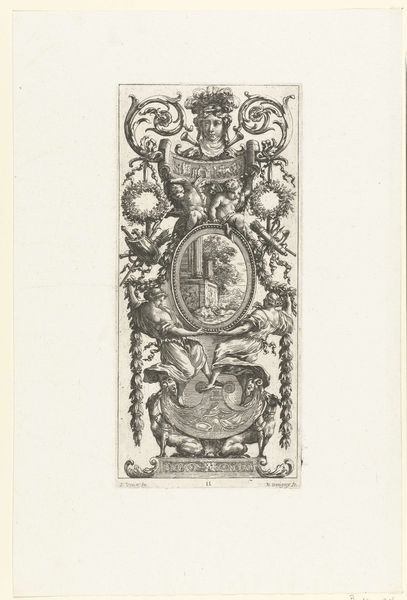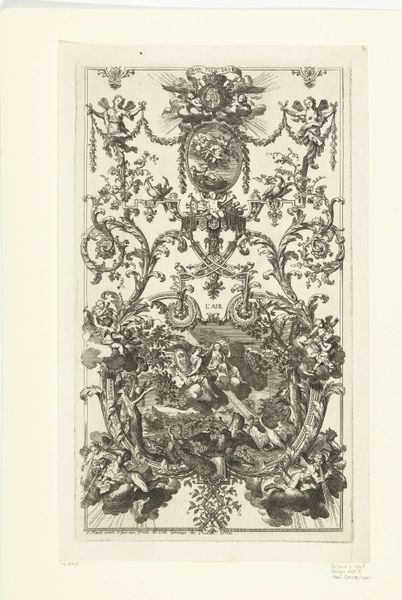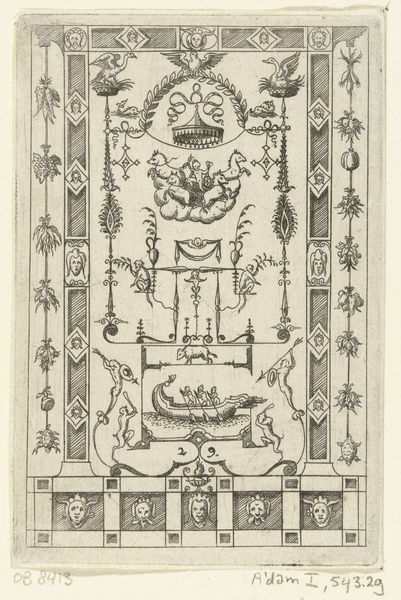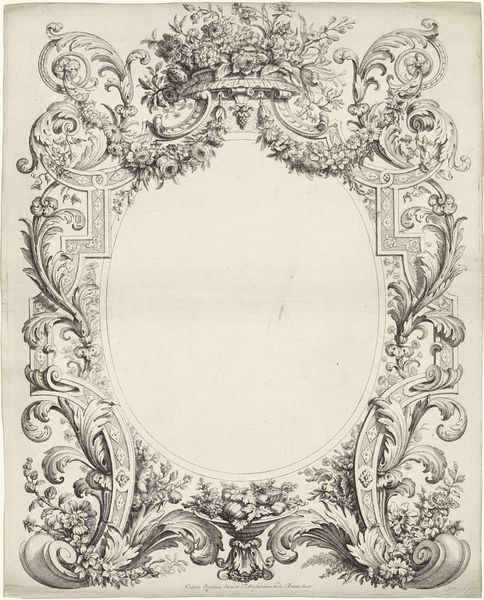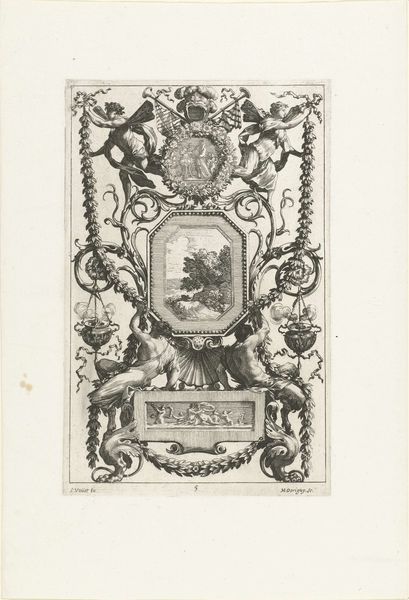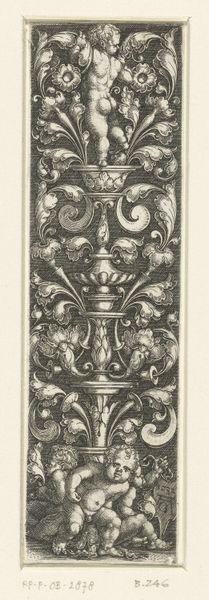
engraving
#
allegory
#
baroque
#
history-painting
#
decorative-art
#
engraving
Dimensions: height 239 mm, width 124 mm
Copyright: Rijks Museum: Open Domain
Editor: This is an engraving from 1647 by Michel Dorigny called "Muurpaneel met twee sfinxen onder achthoekige lijst", which roughly translates to “Wall panel with two sphinxes under an octagonal frame." I find its decorative and fantastical nature quite captivating, it reminds me of an architectural ornament. How should we understand the relationship between its decorative and historical qualities? Curator: From a materialist perspective, it's vital to consider the function of an engraving like this. These weren't intended as 'high art' in the way we understand it now, but as a readily reproducible commodity, templates, or source material for artisans. Think of furniture makers, plasterers or other crafts people using this design as a visual pattern book, incorporating these images into their production process. The ease of replication influenced popular taste and design trends. Editor: So the value is less about the 'artist' and more about its usability as a product? Curator: Precisely. The engraving process itself - the labor, the tools, the access to printing presses – all point to specific social structures and economic possibilities in 17th-century Europe. This work represents cultural values but also manufacturing processes, market needs, and access to distribution networks that made such a style appealing, saleable, and accessible. Look at the intricacy - consider the artisan adapting this design for mass consumption, adjusting for time and cost. Editor: That shifts my perspective entirely! I was initially focused on symbolism and style but now I am reflecting on production, workshops and its economic potential. It seems that Baroque wasn’t just about ornamentation; but ornamentation became ingrained as a material, produced for broader society to reproduce at its will! Curator: Exactly! Reflecting on the work done by craftspeople contextualises labor. Editor: Thank you, this has certainly altered how I view the role and context of art production from that period.
Comments
No comments
Be the first to comment and join the conversation on the ultimate creative platform.
